Pollution Prevention Explorer
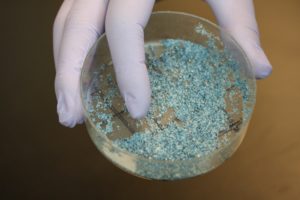
Microbeads filtered from facewash, in the lab. These small plastic particles are a type of microplastic pollution impacting the Great Lakes.
Explore a sortable list of external resources on the topics of water pollution and pollution prevention. Pollution prevention is broadly defined as any action that reduces, eliminates or prevents pollution at its source, and Illinois-Indiana Sea Grant focuses its pollution prevention outreach efforts to protect our shared water resources.
To easily find what you need, the following filters have been provided:
- Age Group
- Location
- Topic
- Learning Mode
- Time Required to Complete
Many of these resources require an internet connection. However, portions of some activities may be completed offline, as indicated in the description of the resource. Several activities and many standardized lessons may require additional supplies to fully complete. All resources categorized as standardized lessons are either already aligned or can be adapted to K-12 science standards.
Filter By:
Resources
Marine Debris GLLee
This resource for classroom teachers introduces the topic of marine debris in a digital and asynchronous format through google classroom. Teachers will learn how marine debris impacts our Great Lakes and the animals (including humans) and plants that depend on them. Content learned is best shared with grades 4-12. Access to the google classroom requires the completion of a free application.
Age Group:
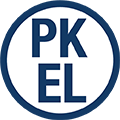



Location:


Topic:
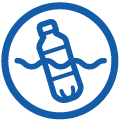
Learning Mode:



Time to Complete:

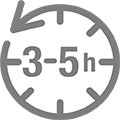
Plastic Pollution and You
This K-12 curriculum is Next Generation Science standards-aligned and focuses on plastic pollution in watersheds in New York but can be adapted to individual needs. The 15 lessons are crossdisciplinarity exploring the scope of plastic pollution, plastic reduction, and a final unit on plastic pollution in our water. The curriculum download is available through the completion of a free application.
Age Group:



Location:


Topic:

Learning Mode:

Time to Complete:
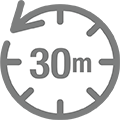


Marine Debris Interruptions
This Next Generation Science Standards aligned lesson for grades 4-12 helps students focus on one marine debris object commonly found on Oregon beaches, research its original purpose, user, and life cycle, and then propose targeted solutions to prevent this particular item from becoming marine debris.
Age Group:

Location:

Topic:

Learning Mode:

Time to Complete:

Microfiber Lesson Plan: The Effects of Washing Machine on Textiles
This Next Generation Science Standards aligned lesson engages students in the design and implementation of a hands-on science experiment evaluating conditions that might cause microfibers to shed from cloth. This lesson and an associated data sheet can be downloaded from the "additional publications" section under the lesson description.
Age Group:

Location:
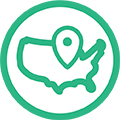


Topic:

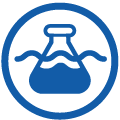
Learning Mode:

Time to Complete:

Microplastics Research in the Classroom
This standardized lesson provided a hands-on demonstration of how microplastics are sampled and examined from beaches for research purposes.
Age Group:

Location:


Topic:


Learning Mode:

Time to Complete:

(Pollution) Free Shipping
This standardized lesson exposes students to the science and engineering practice of developing and using models. Through an exploration of some of the measures that the shipping industry is taking to reduce environmental impact, students will investigate possible solutions and mathematically model how they might work.
Age Group:

Location:


Topic:
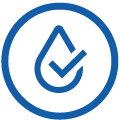

Learning Mode:



Time to Complete:

Where does it go? Adventures with the Water Science Explorers
This resource for elementary and middle school students is a downloadable storybook that teaches students about the wastewater treatment process while offering STEM activities. The book is available in English, Spanish, and Polish. This resource can be read offline.
Age Group:


Location:


Topic:



Learning Mode:


Time to Complete:


River Runner
This online resource allows you to trace the flow of a raindrop from anywhere in the contiguous United States.
Age Group:




Location:



Topic:

Learning Mode:

Time to Complete:

Dose of Reality
This resource for high school students and lifelong learners is a newspaper insert that provides multiple short articles about how chemicals (including pharmaceuticals and personal care products) affect our waterways, which chemicals may be problematic, the importance of fresh water, and how to keep our waters clean. This resource can be read offline.
Age Group:


Location:



Topic:





Learning Mode:

Time to Complete:


Sensible Disposal of Unwanted Medicines: A 4-H Guide
This guide has been developed to help high school students understand why chemicals from medications are being found in the environment, the harm these chemicals can cause, and what can be done about it. Five inquiry-based lessons are included. This resource can be completed offline.
Age Group:

Location:


Topic:


Learning Mode:


Time to Complete:

How Drugs Pollute Our Drinking Water
This three minute video explores pharmaceutical pollution and how proper disposal is one way we can help keep pharmaceutical waste out of our water.
Age Group:


Location:


Topic:

Learning Mode:

Time to Complete:

Cosmetics and Your Health
This resource for high school and lifelong learners discusses cosmetics and personal care products chemical components and how researchers are working to better understand if any of these affect human health.
Age Group:


Location:

Topic:


Learning Mode:


Time to Complete:

Making a Healthier Home
This article for high school students and lifelong learners explores ways to reduce potentially toxic substances in your home.
Age Group:


Location:

Topic:


Learning Mode:

Time to Complete:

Microplastic Pollution and Human Health
Coming soon! This standards-aligned lesson for grades 4-8 is an interactive activity that explores marine debris sources and the estimated degradation rates of various types of common household items that can easily become marine debris. This activity could also be used for adult audiences.
Age Group:


Location:




Topic:



Learning Mode:


Time to Complete:

Flame Retardants
This resource for high school students and lifelong learners provides an introduction to flame retardants and potential exposure-related impacts to human health.
Age Group:


Location:

Topic:

Learning Mode:


Time to Complete:

Pesticides
This resource for high school students and lifelong learners defines pesticides and explores the health effects of pesticide residues. It also includes a short video about the effects of pesticides and agricultural chemicals on children’s health. Video length: 4:36.
Age Group:


Location:

Topic:

Learning Mode:



Time to Complete:

Nanomaterials
This resource for high school students and lifelong learners provides an introduction to nanomaterials and discusses the potential risks associated with exposure and the considerations needed for their use to improve public health.
Age Group:


Location:

Topic:

Learning Mode:


Time to Complete:

Endocrine Disruptors
This resource for high school students and lifelong learners provides an introduction to endocrine disruptors and explores the ways people may be exposed.
Age Group:


Location:

Topic:

Learning Mode:


Time to Complete:

Perfluoroalkyl and Polyfluoroalkyl Substances (PFAS)
This resource for high school students and lifelong learners provides an introduction to PFAS and includes information about exposure risks and health concerns.
Age Group:


Location:

Topic:

Learning Mode:


Time to Complete:

Kids Environment Kids Health: Pollution
This resource for kids, parents, and teachers provides games, songs, activities, lessons and simple reading materials related to pollution in our environment.
Age Group:

Location:

Topic:



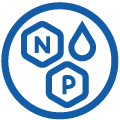
Learning Mode:


Time to Complete:




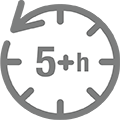
Super Malio Brothers
This video geared toward middle and high school explores the dangers that the chemicals found in plastics can pose to the environment and human health. Video length: 8:53.
Age Group:


Location:

Topic:

Learning Mode:

Time to Complete:

Water Science School
This resource for educators and lifelong learners offers a wide array of water information including pictures, data, maps and an interactive activity center. Also available in Spanish and Chinese languages at the same link.
Age Group:




Location:

Topic:


Learning Mode:



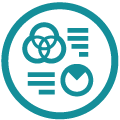



Time to Complete:





Water Education Posters
This series of posters for grades 3-8 presents nine different water related topics using a cartoon format and contain educational activities.
Age Group:




Location:

Topic:



Learning Mode:


Time to Complete:

How Chicago Reversed its River: An Animated History
This five minute video for all ages provides an animated history of how Chicago reversed the direction of its river to carry all of Chicago’s polluted water away from the Great Lakes.
Age Group:


Location:


Topic:



Learning Mode:

Time to Complete:

DIY Lake Science
This free app for iPhone and iPad allows families and educators to investigate lakes and other freshwater ecosystems through videos, simulations and activities, and includes twelve hands-on activities using everyday items. Some topics included are stormwater run-off, nutrient pollution, and how pollutants can affect aquatic animals.
Age Group:




Location:




Topic:






Learning Mode:




Time to Complete:



Is This Watershed Contaminated With PCBs?
This journal article for educators outlines an environmental monitoring simulation geared toward middle and high school students. The lesson uses polychlorinated biphenyls (PCBs) as a watershed contaminant but can adapted to simulate monitoring other pollutants. This resource is available by completing a National Science Teaching Association (NSTA) free membership registration. Portions of the described lesson are completed offline.
Age Group:


Location:


Topic:




Learning Mode:


Time to Complete:


Talking Trash
This journal article for educators outlines an inquiry unit for grades 4-5. The multi-day unit uses trash pollution as the theme to develop scientific research and communication skills. This resource is available by completing a National Science Teaching Association (NSTA) free membership registration. Activities described in this resource are completed offline.
Age Group:

Location:




Topic:

Learning Mode:


Time to Complete:



Plastic Pollution to Solution
This journal article provides an outline to utilize a K-2 makerspace to engineer solutions for plastic pollution during six to eight week unit. This resource is available by completing a National Science Teaching Association (NSTA) free membership registration. Activities described in this resource are completed offline.
Age Group:

Location:


Topic:

Learning Mode:


Time to Complete:



The Watershed Sleuth Challenge
This digital resource geared toward middle and high school students provides a series of challenges to learn about the importance of watersheds and ways you can protect them. Participants can earn a digital badge after completing each of three lessons taking approximately 30 minutes each.
Age Group:


Location:

Topic:




Learning Mode:



Time to Complete:

H2Know
This standards-aligned, digital case study for grades 9-12 lets students learn about harmful algal blooms in Lake Erie and the human activities that contribute to them. The interactive activities take multiple class periods.
Age Group:


Location:


Topic:




Learning Mode:





Time to Complete:




The Dirty Water Project
This activity for grade 3-5 lets students test different methods - aeration and filtering - for removing pollutants from water. This activity takes 90 minutes, and portions of it are completed offline.
Age Group:

Location:


Topic:

Learning Mode:



Time to Complete:

Healthy Lawn Care Practices
This four minute video highlights ways that homeowners can take care of their lawn while being environmentally friendly.
Age Group:

Location:



Topic:



Learning Mode:

Time to Complete:

How’s My Waterway?
This database and accompanying factsheet for high school students and lifelong learners allows the user to explore waterway quality by location.
Age Group:


Location:



Topic:


Learning Mode:



Time to Complete:

How the MWRD Protects Water Quality
This brief history and pictoral overview of water quality monitoring and treatment processes for middle, high school and lifelong learners explains how the Metropolitan Water Reclamation District protects the Chicago Area Waterways. An overview of debris collection boats and access to annual debris collection data is provided.
Age Group:



Location:


Topic:




Learning Mode:


Time to Complete:


Streamer
Use this interactive map and accompanying datasets to visualize and understand where water flows. Trace upstream and downstream from your location, generate reports on the stream characteristics and the places it passes through, and view real-time streamflow. Some locations link to the U.S.G.S. National Water Information System and provide extensive historic water quality data reports.
Age Group:



Location:



Topic:


Learning Mode:


Time to Complete:




Splish, Splash, I Was Takin’ a Bath!
This standards-aligned lesson for grades 3-5 uses models and scientific investigation to explore the causes of water pollution and its effects on the environment. The lesson takes one hour and is completed offline.
Age Group:

Location:


Topic:






Learning Mode:


Time to Complete:

Introduction to Water Chemistry
This Next Generation Science Standards aligned lesson for grades 7-9 introduces water chemistry using the topic of maintaining unpolluted drinking water supplies. It explains sources and consequences of poor water quality and describes new and existing water remediation technologies. This lesson takes 45 minutes, and available resources include an instructional powerpoint, student worksheet, and links to lab activities in chromotography, activated carbon filters, and water treatment pH.
Age Group:


Location:


Topic:



Learning Mode:



Time to Complete:


Give Water a Hand
This series of activity guides for educators and grades 3-8 helps youth solve real water problems in their own communities. A Spanish language guide is available. The guide culminates in a multi-week service learning project and is completed offline.
Age Group:


Location:



Topic:



Learning Mode:



Time to Complete:

Lawn to Lake Midwest
This website for homeowners and landscape professionals focuses on an approach to lawn care that works with nature to protect water resources and grow a healthy landscape. Recommendations for sustainable lawn care practices that prevent polluted runoff from entering our waterbodies are provided.
Age Group:

Location:


Topic:



Learning Mode:




Time to Complete:


Purdue Rainscaping Education Program
This program provides training and resources in rain garden planning, installation, and maintenance for homes, businesses, and small public spaces. The format is designed as instructional and experiential professional development for Master Gardeners and for professionals in the fields of conservation, stormwater management, and landscape design.
Age Group:

Location:



Topic:


Learning Mode:




Time to Complete:





Stormwater@Home Video Series
These two to four minute episodes introduce stormwater best management practices that homeowners and businesses can utilize to reduce runoff and improve water quality, including rain barrels, rain gardens, permeable pavement, green roofs, and property care practices.
Age Group:


Location:



Topic:


Learning Mode:

Time to Complete:

How To Install A Rain Barrel
This four minute video provides a step-by-step demonstration of proper rain barrel installation.
Age Group:

Location:


Topic:

Learning Mode:


Time to Complete:

Build Your Own Rain Barrel
This activity sheet for grades 4-6 teaches the basics about urban stormwater runoff, water conservation, and how to build and use your own rain barrel. This activity is completed offline and may be adapted to meet the needs of other age groups.
Age Group:




Location:

Topic:

Learning Mode:


Time to Complete:



A Drop’s Life – The Sequel (Updated)
This four minute cartoon focuses on the fate of rain drops that encounter green infrastructure projects in DC Water's Clean Rivers Project.
Age Group:




Location:

Topic:



Learning Mode:

Time to Complete:

A Drop’s Life
This four minute cartoon focuses on the fate of a rain drop in Washington, DC's combined sewer system and in DC Water's Clean Rivers Project storage and treatment systems.
Age Group:




Location:

Topic:


Learning Mode:

Time to Complete:

Nonpoint Source Pollution Tutorial
This tutorial provides detailed reading material to learn about non-point source pollution. Topics include the history and types of non-point source pollution and methods used to detect, assess, and reduce the damaging effects of pollutants on the environment.
Age Group:


Location:

Topic:



Learning Mode:

Time to Complete:


What is Eutrophication?
This one minute video explains how nutrient runoff leads to harmful algal blooms and dead zones in coastal waters.
Age Group:



Location:

Topic:


Learning Mode:

Time to Complete:

Teaching Pollution Prevention through Art and Science
This resource geared toward elementary through high school students provides a link to a Google Drive compilation of teacher resources and curriculum materials to engage students in understanding their role in plastic pollution prevention.
Age Group:



Location:



Topic:



Learning Mode:


Time to Complete:



What is a Watershed?
This short video for all ages illustrates and defines what a watershed is and why we all depend on a healthy watershed. Video length: 1:17.
Age Group:




Location:


Topic:


Learning Mode:

Time to Complete:

Pipe Up
This game for ages eight and up allows players to learn how to protect waterways by using game pieces to build a working system of pipes around broken pipes and other pollution related obstacles. This game is completed offline.
Age Group:


Location:

Topic:


Learning Mode:


Time to Complete:

Plastic in the Water Column
This standards-aligned lesson for grades 6-8 provides students an opportunity to investigate how the density of plastic affects its location in the ocean water column, how marine debris disrupts food webs, and personal actions to reducing plastic use. The lesson takes approximately 45 minutes and is completed offline.
Age Group:

Location:


Topic:

Learning Mode:


Time to Complete:

The Nurdles’ Quest for Ocean Domination
This video geared toward upper elementary students and beyond details the host of problems that nurdles, the factory-made pellets that form the raw material for all plastic products, pose to our oceans. Video length: 4:54.
Age Group:




Location:

Topic:


Learning Mode:

Time to Complete:

Tools to Reduce Waste in Schools
This toolkit for teachers and school administrators provides practical ideas to implement new or expand existing waste reduction programs.
Age Group:



Location:

Topic:

Learning Mode:

Time to Complete:





Teaching Great Lakes Science: Beach Clean-Up Sets
This data set provides information about trash collected along Lakes Michigan, Huron, Erie and Superior. Sample inquiry questions and ideas for volunteering are provided.
Age Group:




Location:


Topic:

Learning Mode:

Time to Complete:





Teaching Great Lakes Science: Water Quality
This standards-aligned lesson for grades 4-8 explores different ways to determine water quality by making observations and measurements of several water samples. The lesson takes approximately 50 minutes and is completed offline.
Age Group:


Location:



Topic:

Learning Mode:


Time to Complete:

Teaching Great Lakes Science: Exploring Watersheds
This standards-aligned lesson for grades 4-8 focuses on watersheds and how they function. Students collaboratively build a model of a watershed taking two 50 minute class periods. This lesson is completed offline.
Age Group:


Location:



Topic:


Learning Mode:


Time to Complete:

Mitigating Microplastics
This curriculum for grades 6-8 provides three standards-aligned lessons taking 60-90 minutes each. The entire curriculum is designed to take one week. Through hands-on activities students study the issue of microplastics in the ocean including the analysis of both the problem and possible solutions. Portions of this resource are completed offline.
Age Group:

Location:


Topic:


Learning Mode:


Time to Complete:



Personal Plastic Use and Waste Inventory
This resource for High School and Lifelong Learners outlines how to complete a personal evaluation of the plastic items you use and the subsequent waste you generate on a typical day. Questions for reflection are provided. This resource is completed offline
Age Group:


Location:


Topic:


Learning Mode:


Time to Complete:

Classroom Waste Audit and Sorting Activity
This resource outlines a short classroom activity allowing students to complete a hands-on waste analysis study. This resource is completed offline
Age Group:



Location:


Topic:


Learning Mode:


Time to Complete:

Debris Tracker
This mobile application for smart devices is for all ages and allows users to contribute citizen science by collecting data about litter from places in their community and beyond. Additional teacher resources like a Plastic Pollution Journal and Debris Tracker Guide are provided.
Age Group:




Location:




Topic:

Learning Mode:


Time to Complete:



What is the Great Pacific Garbage Patch?
This resource provides short answers to common ocean questions, the Great Pacific Garbage Patch is discussed here.
Age Group:


Location:


Topic:

Learning Mode:

Time to Complete:

Filter Fun
This standardized lesson for makerspaces allows students to assess materials for their ability to filter out debris and then design and test a filter system using 3D printed models. A 3D printer with filament, design software, USB drive and other materials are required. This resource is completed offline.
Age Group:


Location:


Topic:

Learning Mode:


Time to Complete:

Picking on Plastics
This short blog post geared toward high school students and lifelong learners explains the chemical makeup of plastic, its contribution to our modern lives, the environmental challenges, and the future of plastic innovations.
Age Group:


Location:


Topic:

Learning Mode:

Time to Complete:

Plastic Pollution
This set of resources geared toward middle and high school students includes videos and standards-aligned lesson plans related to plastic pollution.
Age Group:


Location:


Topic:

Learning Mode:



Time to Complete:



Where Did the Bath Toys Go?
This standardized lesson for grades 6-8 investigates of the true story of bath toys that fell off a container ship and can be completed in one class period. This resource is completed offline
Age Group:

Location:

Topic:

Learning Mode:

Time to Complete:

Choices Make a Difference
This standards-aligned lesson for grades 5-6 allows students to learn about wastewater treatment plants and the limitations of removing pollutants. Depending on the selected extension activities, this lesson can take one to three class periods. This resource is completed offline.
Age Group:


Location:


Topic:





Learning Mode:

Time to Complete:

Connecting Land and Water Choices
This standards-aligned lesson for grades 3-4 offers a hands-on activity to create a watershed and observe the impact of non-point source pollution, all within one class period. This resource is completed offline.
Age Group:

Location:


Topic:



Learning Mode:

Time to Complete:

So Great, So Fragile: Great Lakes Pollution
This special news feature geared toward high school students and lifelong learners provides reading materials and two short video clips addressing the impacts of microplastic and nutrient pollution on the Great Lakes.
Age Group:


Location:


Topic:



Learning Mode:


Time to Complete:

Pharmaceuticals Move throughtout the Aquatic Environment
This infographic geared toward high school students and lifelong learners illustrates the flow of pharmaceuticals into terrestrial and aquatic environments and the effects on wildlife.
Age Group:


Location:

Topic:

Learning Mode:

Time to Complete:

HOMES at Home: Be a Great Lakes Hero Episode 2
This approximately 30 minute video for all ages discusses how to protect the Great Lakes by learning how to stop marine debris.
Age Group:




Location:


Topic:

Learning Mode:

Time to Complete:

What is Marine Debris?
This video for all ages is less than two minutes long and illustrates what marine debris is and some of its harmful effects on our oceans, with the help of nationally syndicated cartoonist Jim Toomey.
Age Group:




Location:


Topic:

Learning Mode:

Time to Complete:

(Garbage) at the Beach
This lesson for Pre-K to 2nd grade is a storytime outline taking between 45 minutes to an hour that teaches where garbage comes from and how it ends up in the water, ultimately becoming marine debris.
Age Group:

Location:




Topic:

Learning Mode:

Time to Complete:

Trash Trunk
This loanable trunk for all ages contains 14 marine debris lessons and all the supporting materials needed to complete the activities. Formal and non-formal educators can complete one lesson or develop a unit of study taking anywhere from 20 minutes to multi-day projects. An online trash trunk request form is provided. Portions of this resources are completed offline.
Age Group:




Location:



Topic:

Learning Mode:


Time to Complete:





Plastic Panic
This 20 minute activity for all ages teaches about microplastic pollution with a hands-on journey through a simulated Wastewater Treatment Plant. Any adult resident in Wisconsin can borrow the Plastic Panic Kit free of charge from the Wisconsin Water Library at the University of Wisconsin-Madison. A detailed activity outline is available for download. This resource is completed offline.
Age Group:




Location:



Topic:


Learning Mode:

Time to Complete:

How to Make a Pollution Catcher
This three minute video geared toward elementary school provides a brief description of air pollution and shows how to make a simple pollution catching tool with common household items.
Age Group:

Location:

Topic:

Learning Mode:

Time to Complete:

Marine Debris and Me
This resource for grades 4-8 contains five lessons that teach students about marine debris and its impacts on humans and the environment through hands-on exercises and graphing studies that take between 15 minutes to two hours to complete. Portions of this resource are completed offline.
Age Group:


Location:


Topic:



Learning Mode:

Time to Complete:


Beach Litter Date Exploration Table
This dataset geared toward high school students and lifelong learners provides access to beach litter data that can be refined by state, county, beach, and date. Data can be exported into an excel document.
Age Group:


Location:


Topic:

Learning Mode:

Time to Complete:





Litterbase
This regularly updated database summarizes results of over 2,000 scientific studies relating to marine debris. It provides maps and graphic analysis of both the amount and distribution of litter and microplastics, as well as interactions between aquatic life and marine litter.
Age Group:


Location:




Topic:


Learning Mode:

Time to Complete:





Trash Talk
This video for grades K-12 is 15 minutes in length and defines marine debris, explores its impacts, and identifies solutions. In addition, the video is offered in six smaller video segments.
Age Group:



Location:




Topic:


Learning Mode:

Time to Complete:

Quest for Less
This comprehensive resource for grades K-8 provides 43 hands-on, multidisciplinary lessons and activities focused on preventing and reusing waste. The activities take one to three hours and can be completed offline.
Age Group:


Location:

Topic:




Learning Mode:



Time to Complete:

Educator’s Guide to Marine Debris
This educator’s guide for grades K-12 includes nine lessons about marine debris that require at least one hour each. Free registration is required to download free educational guides in English, Spanish and French. Portions of this resource can be completed offline.
Age Group:



Location:

Topic:



Learning Mode:


Time to Complete:

Nature’s Acadamy: Science Literacy Project Standards-Based Curriculum
This curriculum incorporates lessons on marine debris into a broader investigation that helps students make the connection between the various parts of an aquatic ecosystem, as well as understand how people can impact such environments. It is designed for 5th grade students participating in a field trip program may be adapted for other educators. Detailed field trip activities are outlined and followed-up with four 110 minute standards-aligned lessons to quantify data collected during field trip experiences. Portions of this resource are completed offline.
Age Group:

Location:

Topic:

Learning Mode:

Time to Complete:

Rethink Your Plastics Use at Put-in-Bay
This fact sheet geared toward high school students and lifelong learners discusses the negative effects of plastic pollution and simple steps to reduce plastic use.
Age Group:


Location:


Topic:

Learning Mode:

Time to Complete:

How Big is a Crowd?
This standards-aligned lesson for grades 4-8 introduces the relative size of the Great Lakes, surrounding populations, and human impacts on fish production and water quality. It can be easily be adapted and enhanced for high school students and lifelong learners.
Age Group:




Location:


Topic:



Learning Mode:

Time to Complete:

Take Local Action for Global Change: Service Learning to Stop Trashing the Ocean and Waterways
This service-learning resource for grades 5-12 provides information to investigate, prepare, take action, reflect, and demonstrate that local cleanups can have huge positive consequences. Portions of this resource can be completed offline.
Age Group:



Location:



Topic:


Learning Mode:



Time to Complete:


Watershed Map Game
The resource for educators explains how to create a watershed game designed to explore the positive and negative human impacts of runoff, water use and misuse, sedimentation, water treatment, energy usage, and other water quality issues on water systems. This resource is completed offline.
Age Group:



Location:



Topic:



Learning Mode:


Time to Complete:

Winged Ambassadors
This series of activities for grade 6-8, with extensions for grades 9-12, provides five ocean literacy lessons through the eyes of the Albatross. The lessons require two to three 45 minute class periods and are aligned to Next Generation Science Standards and the Common Core State Standards for English Language Arts/Literacy and Mathematics. Tips to adapt each lesson for distance learning are included. Portions of this resource can be completed offline.
Age Group:


Location:


Topic:


Learning Mode:



Time to Complete:


5 Gyres Trash Academy
This video series for grades 5-12 includes eight lessons in English, three of which are translated into Spanish. The videos range from 8-25 minutes in length. The series teaches about the history of plastic, the plastic lifecycle, ocean gyres, effects on watersheds and wildlife, and actions to reduce plastic pollution.
Age Group:



Location:


Topic:




Learning Mode:

Time to Complete:

5 Gyres Plastic Pollution Curriculum
This K-12 curriculum is Next Generation Science standards-aligned and explores science through the lens of plastic pollution. The curriculum download is available through the completion of a free application. The K-5 section is divided into 7 lessons each containing three to four activities estimated to take between 30-60 minutes to complete. The middle school and high school section is divided into nine lessons each containing three to four activities taking approximately 50 minutes to complete. The curriculum also includes TrawlShare, a six unit experiential learning program designed for students learning aboard sailing vessels. Portions of this resource can be completed offline.
Age Group:



Location:


Topic:

Learning Mode:


Time to Complete:



Marine Debris Monitoring Toolkit for Educators
This toolkit for educators is designed to teach K-12 students about marine debris through education, monitoring efforts, and student-driven engagement and outreach. Portions of this resource can be completed offline.
Age Group:



Location:


Topic:

Learning Mode:




Time to Complete:





Washed Ashore Integrated Arts Marine Debris Curriculum
This curriculum for grades 4-6 utilizes science and the arts to teach about marine debris in 12 lessons taking 50-55 minutes each. Science, language arts, visual arts and social studies standards are linked to applicable lessons. The culminating lesson is a visual and language art exhibit and/or performance which will engage and teach communities about plastic pollution in oceans and waterways.
Age Group:


Location:


Topic:

Learning Mode:



Time to Complete:


Talking Trash and Taking Action
This marine debris resource includes 16 activities for grades K-12. Through hands-on, interactive lessons, students learn about marine debris, conduct their own cleanup, process their reactions to the cleanup experience, and think creativity and critically about ocean trash prevention. Activities can enhance existing lesson plans or be followed in order as a complete curriculum. A Spanish language instructor’s manual is also available.
Age Group:



Location:


Topic:


Learning Mode:


Time to Complete:




Turning the Tide on Trash: Learning Guide on Marine Debris.
This set of 13 interdisciplinary lessons for grades 1-12 explores marine debris and provides background information. The lessons are divided into three units that define marine debris, explore its impacts, and investigate solutions. This resource can be used as a stand-alone teaching tool or to supplement work in other subject areas. The lessons vary in length from 20 minutes to a semester long project.
Age Group:



Location:


Topic:

Learning Mode:




Time to Complete:




Marine Debris STEAMSS Curriculum
This curriculum for grades 4-12 uses a multi-disciplinary approach to teach hands-on activities related to marine debris sources, impacts, and solutions. It is a curated collection of new and existing resources and lessons that educators can use to create a project-based learning unit. Portions of this resource can be completed offline.
Age Group:


Location:


Topic:




Learning Mode:




Time to Complete:



Hawaiʻi Wildlife Fund: Marine Debris Keiki Education and Outreach (MDKEO) Program
This curriculum for grades K-5 introduces ocean circulation, marine ecology, and human impacts with a focus on marine debris through a series of three lessons requiring 1-2 hours. The curriculum also includes presentations, activities, and vocabulary sheets. Portions of this resource can be completed offline.
Age Group:

Location:


Topic:



Learning Mode:




Time to Complete:

Be an Ocean Guardian: Activity Book
This activity book for grades K-3 teaches students about the ocean, marine debris, and why marine debris is important through word searches, games, and coloring pages. This resource is completed offline.
Age Group:

Location:


Topic:



Learning Mode:

Time to Complete:

Understanding Marine Debris
This resource for K-8 helps children understand the problem of marine debris with an assortment of puzzles, brain-teasers, and coloring activities. This resource is completed offline.
Age Group:


Location:

Topic:



Learning Mode:

Time to Complete:

Plastic Pollution in the Great Lakes
This video for high school and lifelong learners explores the prevalence and effects of microplastics on the Great Lakes ecosystem. Video length: 8:06.
Age Group:


Location:


Topic:



Learning Mode:

Time to Complete:

Is Your Fleece Jacket Polluting the Oceans?
This video for high school and lifelong learners provides background information regarding microfibers as a source of microplastic pollution and offers collective and personal actions as solutions. Video length: 5:53.
Age Group:


Location:




Topic:



Learning Mode:

Time to Complete:

How Fresh are the Great Lakes? An Exploration of the Great Lakes
This standardized lesson for grades 5-8 examines the historic significance of the Great Lakes as a source of fresh water for humans. A series of hands-on laboratory experiments and discussion explores pollution’s effects on the Great Lakes. This lesson requires two class periods. Portions of this resource can be completed offline.
Age Group:

Location:


Topic:


Learning Mode:




Time to Complete:

Water Quality – Watershed
This video for grades 5-8 defines a watershed and explains how the watershed approach can help to better understand and solve water quality problems. Background material for teachers and student discussion questions are provided. Video length: 3:25. Portions of this resource can be completed offline.
Age Group:

Location:

Topic:



Learning Mode:


Time to Complete:

Water Pollutants
This video for grades 5-8 defines and provides examples of sediment, nutrients, chemicals and pathogens as pollutants. Background material for teachers and student discussion questions are provided. Video length: 5:08. Portions of this resource can be completed offline.
Age Group:

Location:




Topic:



Learning Mode:


Time to Complete:

Green@School – Unit 4: Pollution Prevention
This resource is part of a series of units that provide materials for grades K-12 to lead their school through a sustainability certification program. It can also be adapted for other audiences. This unit explores the concept of pollution prevention through activities, discussion, investigations, and student-lead campaigns. Portions of this resource can be completed offline.
Age Group:



Location:

Topic:


Learning Mode:


Time to Complete:



What is Nutrient Pollution?
This infographic for grades 6-12 and lifelong learners examines the scope, scale, sources, and impacts of nutrient pollution across the United States.
Age Group:



Location:


Topic:


Learning Mode:


Time to Complete:

Plastics in the Ocean
This infographic for grades 6-12 and lifelong learners examines common forms of marine debris. It explores sources, entry points, and the impacts on our oceans and Great Lakes in a graphic format. It includes commonly found plastics and ways to combat marine debris.
Age Group:



Location:



Topic:

Learning Mode:

Time to Complete:

It’s Ok to be Smart: How Much Plastic is in the Ocean?
This short video for grades 3-12 and lifelong learners explores the environmental problems plastic pollution poses to humans and wildlife. It also includes some tips to reduce your own plastic use. Video length: 4:43.
Age Group:




Location:


Topic:


Learning Mode:

Time to Complete:

Steve Trash Science: Water Cycle/Oh Yuck Pollution
This video for grades 3-5 explores how earth’s water sources are connected in a continuous cycle and suggests ways to prevent litter and other destructive types of pollution. Video length: 24:46.
Age Group:

Location:


Topic:


Learning Mode:

Time to Complete:

Plastic Pollution Resource Library
This webpage hosts a series of classroom resources from the National Geographic Society to teach grades 3-15 about plastic pollution.
Age Group:


Location:



Topic:

Learning Mode:






Time to Complete:


Kids vs. Plastic
This toolkit for grades K-8 provides age appropriate videos, hands-on activities and ways to help prevent plastic pollution. Portions of these resources can be completed offline.
Age Group:


Location:



Topic:


Learning Mode:





Time to Complete:


Nutrient Pollution
This video for grades 6-12 and lifelong learners defines nutrient pollution, identifies nutrient pollution sources and addresses its impact on people’s health, our environment, as well as recreation and tourism. Video length: 2:05.
Age Group:



Location:



Topic:


Learning Mode:

Time to Complete:

What is the Impact of Beach Litter?
This standardized lesson engages grades 5-12 and lifelong learners in the construction of a web of beach litter causes and impacts during one class period. This lesson is completed offline.
Age Group:



Location:



Topic:

Learning Mode:


Time to Complete:

Let’s be Litter Free: Investigating Anthropogenic Litter in Local Ecosystems
This standardized lesson for middle school is a set of learning activities that investigates anthropogenic litter (AL) in local ecosystems and introduces the ways scientists, volunteers, and organizations can work together towards solutions. Students use existing AL data sources, create their own sets, investigate how data can inform community litter solutions, and explore ways to take action. Portions of this lesson can be completed offline.
Age Group:

Location:




Topic:


Learning Mode:


Time to Complete:



A healthy waterway begins with you.
This resource for high school students and lifelong learners provides background on water quality and tips for protecting our waterways from nutrient contamination and pollution. Spanish language version available.
Age Group:


Location:



Topic:




Learning Mode:

Time to Complete:

Exploring Along a Line of Micro Particles: Using Marine Debris Studies to Encourage Environmental Stewardship
This lesson for grades 6-12 provides an interactive demonstration of microplastic data collection, analysis and synthesis. An introductory powerpoint, marine debris density ID sheet, and a sample data set are provided. The lesson can vary in length and is completed offline.
Age Group:


Location:


Topic:

Learning Mode:


Time to Complete:

Where You Leave Your Leaves Matters!
This infographic for lifelong learners includes the key message that tree leaves can contribute to nutrient pollution, leading to harmful algal blooms. Suggestions for environmentally friendly tree leaf management are provided. Spanish language version available.
Age Group:

Location:


Topic:




Learning Mode:


Time to Complete:

Flush with Care
This activity page geared towards upper elementary and middle school includes a word scramble and the key message that flushing items that don’t belong in the toilet can harm the local sewer system, water reclamation plants, and our natural waters. Spanish language version available.
Age Group:


Location:


Topic:




Learning Mode:

Time to Complete:

It Was Way Too Liquidy and Weird
In this podcast for high school and lifelong learners, Illinois-Indiana Sea Grant staff draft thier favortie plastic alternatives as they discuss how easy (or difficult) they are to use in an effort to reduce household plastic waste. Podcast length: 53 minutes.
Age Group:


Location:



Topic:

Learning Mode:

Time to Complete:

We’re Doing Everything in Plastic
This podcast for high school and lifelong learners is an interview with Dr. Lorena Rios Mendoza, a professor of chemistry at the University of Wisconsin-Superior. Dr. Mendoza discusses her research from the Great Pacific Garbage Patch to the Great Lakes and the role microplastics play in attracting and concentrating toxic compounds. Podcast length: 36 minutes.
Age Group:


Location:



Topic:

Learning Mode:

Time to Complete:


They’re Also Called Nurdles
This podcast for high school and lifelong learners defines microplastics, summarizes microplastic research, and provides some actions to reduce your personal microplastic footprint. Podcast length: 35 minutes.
Age Group:


Location:


Topic:


Learning Mode:

Time to Complete:


Teaching Idea: Plastic Pollution
This resource is geared toward middle school and provides a series of suggested readings, activities, videos and assessments that you can choose from to build a personalized lesson about plastic pollution. Resources range from 10 minutes to an hour to complete.
Age Group:

Location:

Topic:



Learning Mode:




Time to Complete:


The Medicine Chest: A Collection of Safe Disposal Curriculum Activities and Service Learning Resources
This curriculum for grades 9-12 includes five interdisciplinary, inquiry-based lessons and eight supplemental activities that take from 10 minutes to multi-day projects. Portions of this curriculum can be completed offline.
Age Group:

Location:


Topic:


Learning Mode:



Time to Complete:





No Items Found
There are no items that could be found to match this criteria.
